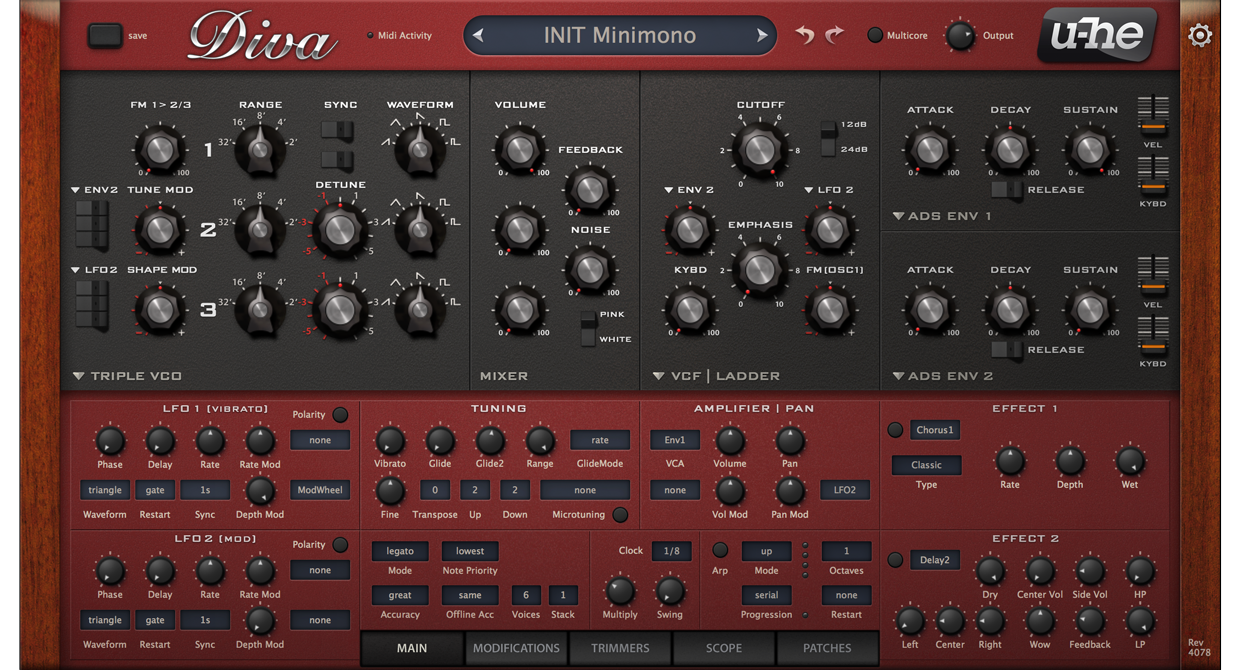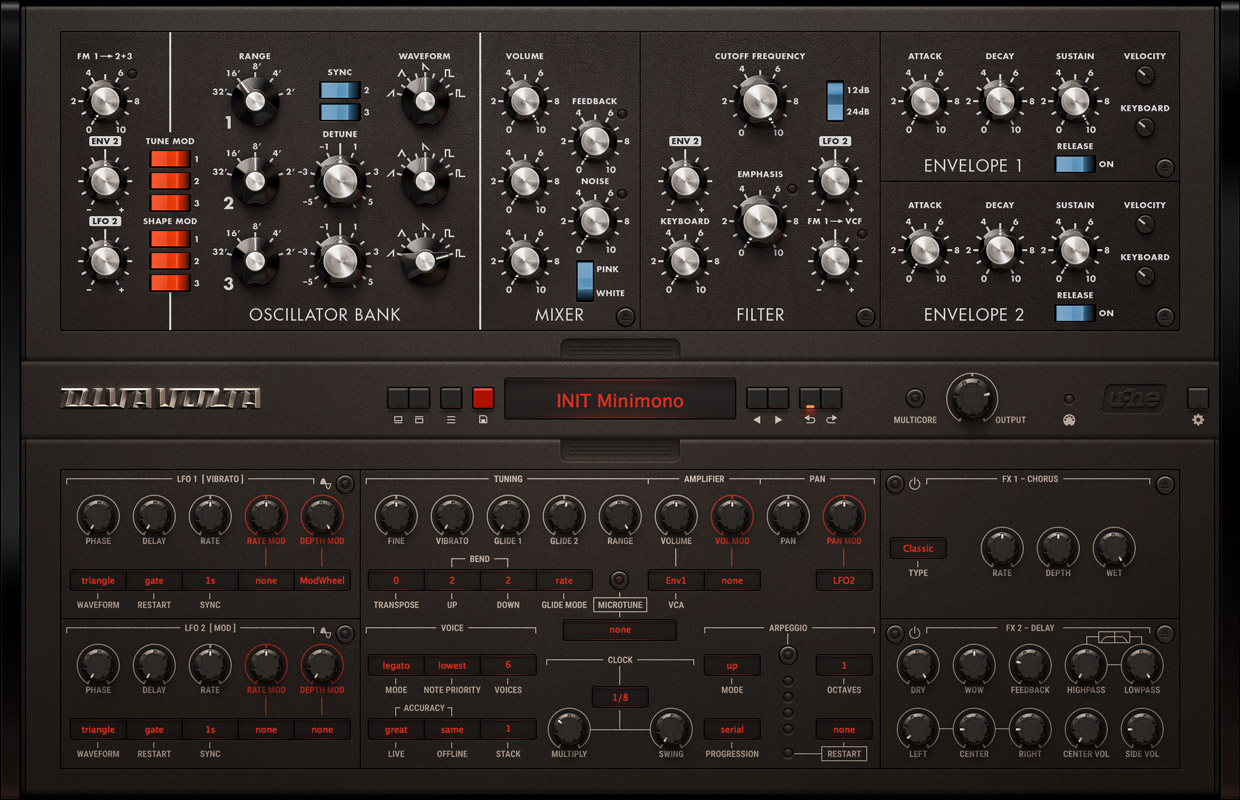Case Study
Volta — A GUI for u-he Diva
Volta is a visually and functionally modifieded GUI for the Software Synthesizer Diva by u-he. For further informations head over to the product site at volta.kapetan.net.
This case study gives a small insight into the thoughts, ideas and solutions behind the redesign.
Table of content
(Work in progress)

